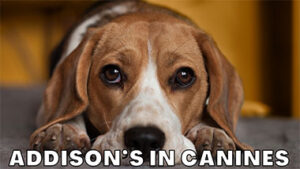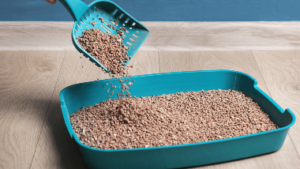Training a good hunting dog begins long before the pup is introduced to guns or taken into the field. No matter what training program you decide to use is based on proper socialization of your dog. Socialization is, quite simply, introducing your dog to new people, experiences and places.

This early introduction allows him to be comfortable in unfamiliar situations and develop the confidence and desire to learn new things. Though many inexperienced owners don’t see the necessity of socializing their dogs, those who know better realize training a dog that is not properly socialized is like trying to build a house without taking the time to lay a proper foundation.
Socialization of your new hunter begins the day he arrives at your home. Taken from mother and his litter mates, the puppy will feel lost and lonely. He will also, however, want to explore his new home. If you have puppy-proofed the house, there is no reason you shouldn’t let him take a look around. Supervise, but from a distance. Give the pup plenty of time and space to check things out. He will eventually make his way back to you. Give him lots of affection; calm rubs on the head, stroking his back and sides and even giving his tail a very gentle tug are all things that will be of benefit later. Lift the puppy’s cheeks and ruffle his ears.

Besides the attention, the pup is also learning that it is ok to be touched. This will make future visits to the vet’s office or groomer a lot easier on everyone concerned. Be sure that your touch is gentle and calm. This allows the pup to know that you are in charge. Rough-housing with the pup puts you on his level and gives him the mistaken impression that he is your equal. Begin using your pup’s name right away and you will be amazed at how quickly he will begin to respond to it.
When in the house or yard, give your pup as much freedom as you can. Supervise, but again, from a distance. You want to pup to explore and experience as many new things as he can, without danger to him or your things. Call him to you once in awhile and when he comes to you, tell him he’s a good boy and give him a small treat (freeze-dried liver or a tiny scrap of jerky is a favorite around our house). Then give the freedom to go explore some more.

If the pup will be staying in the house, set ground rules with family members prior to bringing him home. Consistency from everyone in the house is the only way the dog will learn to follow the rules in his new home. When his behavior is incorrect, a firm “no” accompanied by a frown will soon let him know you are displeased. In the event the behavior is repeated, grasp the loose skin between his shoulders and give him a gentle shake. The trick here is to let the pup know you are not happy with his behavior, but not to hurt him or make him afraid of you. NEVER clap your hands or use other sharp noises (slapping a newspaper, etc) to discipline a dog that will be trained for hunting. Though it may help you correct the undesirable behavior, you are setting yourself up to have a dog that will shy away from loud, sharp noises. Since you want the dog comfortable with the sound of gunfire, this is a training mistake you want to avoid.

The new puppy should have a space of his own, whether it is a kennel in the barn or a crate inside the house. Use common sense when training your new puppy to the crate. Most hunting dogs are transported to the hunting site in a crate – be sure that the crate is not something he dreads. The crate should be used as a sleeping place and many people feed their dogs in a crate, at least when they’re puppies. By feeding the puppy in the crate, he learns to associate it with a good thing – his dinner. Some people leave the crate door open, except when it is bedtime or if they are going to be gone from the house. This allows the puppy to wander in and out and become comfortable with the crate without feeling confined by it. If the crate is properly introduced, many dogs will voluntarily lay down for a nap in their crate or retreat to it if they are in trouble. One last note on crates: if the puppy whines during the night, do not let him out of the crate. If he is allowed to leave the crate when he whines, he will think that whining will get him what he wants and you will end up with the dog that drives you crazy. Instead, distract him by putting a pig ear or a chew toy in the crate with him when you close the door at bedtime. He will soon learn that when you close the crate door he needs to chew on his toy or curl up and sleep.

Any dog, but especially one that will be used to hunt, needs to be able to adapt to new and even frightening situations. Without this ability, the dog become unpredictable or even dangerous. One way to avoid this is to expose the young puppy to as many different places, smells, people and noises as possible.
One thing that must be avoided in these early socialization experiences is allowing the puppy to become terrified of whatever new thing you are exposing him to. If you have spent enough time with the puppy at home, this should not be a problem. After taking him away from his mother, you should have taken over the role as his care-giver and protector. He should be feeling comfortable with you and trusting you to take care of him and act in his best interests.

Now that you’ve gotten to the point that the puppy trusts you and you’ve spent enough time to be able to “read” him and gauge his level of comfort, it’s time to expose the pup to as many strange sights, noises, smells and people as possible. Take them with you when you go to the park, the lake or a friend’s house. Let him ride along with you in the car or truck when you drop the kids off for school. Remember, anything that the puppy hasn’t yet been exposed to can be new and exciting for him, as long as it is properly introduced. This is where you come in. Though you want the pup exposed to as many situations as possible, make sure you remain in control and don’t let anything happen that will cause him to be hurt or badly scared.

An important aspect of proper socialization is encouraging the dog’s desire to explore new places. Though you need to be aware of safety issues and local laws regarding loose dogs, you need to let you pup run around and explore off-lead in as many places as possible. If your town is strict about dogs being leashed, ask around and see if there is a leash-free dog park in the area. This allows your pup to learn to interact with not only other dogs, but their owners as well. You want to allow him as much freedom to explore as possible. When he comes after you call him, tell him he’s a good boy and give him a small treat (freeze-dried liver or a tiny scrap of jerky are both favorites with our dogs). Then be sure and give him the freedom to explore some more.

Whether off-lead or on, introduce your future hunting companion to people. If he seems shy you can allow them to give him a treat, but make sure he sees YOU hand it to them. It is never a good idea to teach your dog to take food from someone he doesn’t know.
By the time to pup is between eight and twelve weeks old, you can begin to teach him beginning commands, such as “no”, “sit”, “come”, “heel” and “stay”. These commands will be the basis for later training and make the puppy into a companion and hunting dog that you will be proud of.
A properly socialized hunting dog will be secure and confident, but at the same time he will know that you are in charge. He will be comfortable interacting with both other dogs and with new people. He will also have learned to put up with being restrained and told “no”.
Remember – at this point in the puppy’s life, everything you do or say to him is a lesson. By spending the time and effort you need to properly socialize your pup from the start, you will not only have a dog that will be easier to train, but you can look forward to having a hunting dog you can be proud of.
Submitted by Safergunsnow.org-for safe firearm handling and storage solutions.




